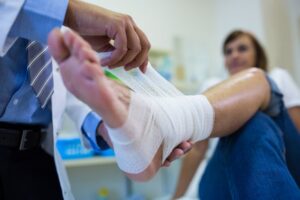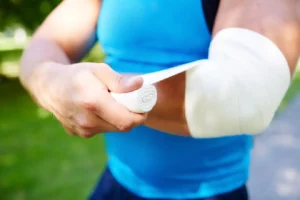Accidents can leave lasting physical and emotional impacts, often leading to chronic pain that affects daily life. Whether from car accidents, workplace injuries, or sports-related incidents, long-term pain can be challenging to manage. At injuries.wiki, we’re dedicated to helping you understand chronic pain, explore effective coping strategies, and regain control of your life.
Understanding Long-Term Pain After Accidents
Long-term pain, also known as chronic pain, is defined as pain that persists for more than three months after an injury. It can be constant or intermittent, ranging from mild discomfort to severe, debilitating pain. Common causes of chronic pain after accidents include:
- Soft Tissue Injuries: Whiplash, sprains, or muscle strains that don’t fully heal.
- Nerve Damage: Resulting from traumatic brain injuries or spinal cord injuries.
- Fractures and Dislocations: That lead to long-term joint pain or arthritis.
- Emotional Trauma: Anxiety, depression, or PTSD can amplify pain perception.
Common Types of Chronic Pain After Accidents
-
Neck and Back Pain
Often caused by whiplash, herniated discs, or muscle strains, neck and back pain can limit mobility and daily activities. -
Nerve Pain (Neuropathy)
Nerve damage from accidents can cause burning, tingling, or shooting pain, commonly affecting the arms, legs, or back. -
Headaches and Migraines
Traumatic brain injuries (TBIs) or concussions can lead to chronic headaches or migraines that persist long after the initial accident. -
Joint Pain and Arthritis
Fractures or dislocations can lead to joint pain, stiffness, or post-traumatic arthritis. -
Complex Regional Pain Syndrome (CRPS)
A rare but severe condition characterized by intense pain, swelling, and sensitivity, usually affecting the arms or legs.
How to Cope with Long-Term Pain
Coping with chronic pain requires a multi-faceted approach that includes medical treatment, lifestyle changes, and emotional support. Here are effective strategies recommended by experts:
1. Medical Treatments
Medication Management
- Over-the-counter pain relievers like acetaminophen or ibuprofen.
- Prescription medications, including muscle relaxants or nerve pain medications.
- Topical pain relief creams for localized discomfort.
Physical Therapy
- Customized exercises to improve mobility and strength.
- Techniques like stretching, massage, or heat/cold therapy.
- Posture training to alleviate strain on muscles and joints.
Interventional Procedures
- Steroid Injections: To reduce inflammation and pain in affected areas.
- Nerve Blocks: Temporary pain relief by numbing the affected nerves.
- Spinal Cord Stimulation: Electrical impulses to interrupt pain signals.
2. Alternative Therapies
Chiropractic Care
Chiropractors can help relieve chronic back or neck pain through spinal adjustments and muscle manipulation. At injuries.wiki, we provide resources on how chiropractic care can support injury recovery.
Acupuncture
This traditional Chinese medicine technique involves inserting thin needles into specific points to stimulate pain relief.
Massage Therapy
Massage therapy helps relax tense muscles, reduce inflammation, and improve blood circulation.
Mind-Body Techniques
- Meditation and Deep Breathing: To reduce stress and pain perception.
- Yoga and Tai Chi: Gentle movements that enhance flexibility, balance, and relaxation.
3. Lifestyle Adjustments
Diet and Nutrition
- Anti-Inflammatory Diet: Include foods like fatty fish, leafy greens, and berries.
- Stay Hydrated: Proper hydration supports joint and muscle function.
Regular Exercise
- Low-impact activities like walking, swimming, or cycling can strengthen muscles and reduce pain.
- Gentle stretching exercises help maintain flexibility and prevent stiffness.
Sleep and Rest
- Prioritize sleep to promote healing and manage pain more effectively.
- Use supportive pillows or mattresses to alleviate pressure on painful areas.
4. Emotional and Mental Health Support
Chronic pain doesn’t only affect the body; it also impacts mental well-being. Managing emotional health is essential for coping with long-term pain.
Counseling and Therapy
- Cognitive Behavioral Therapy (CBT): Helps reframe negative thoughts and manage pain perception.
- Pain Support Groups: Connecting with others who share similar experiences provides emotional support and coping strategies.
Stress Management Techniques
- Mindfulness Meditation: Reduces anxiety and enhances pain tolerance.
- Hobbies and Social Activities: Staying engaged in enjoyable activities helps distract from pain.
When to Seek Medical Help
Consult a healthcare professional if:
- Pain persists or worsens over time.
- It interferes with daily activities or quality of life.
- You experience new symptoms, such as numbness, weakness, or difficulty walking.
Legal Considerations for Long-Term Pain After Accidents
If your chronic pain is a result of an accident caused by someone else’s negligence, you may be entitled to compensation. At injuries.wiki, we provide legal guidance on:
- Filing Personal Injury Claims: Seeking compensation for medical expenses, lost wages, and pain and suffering.
- Dealing with Insurance Companies: Navigating the claims process to receive fair compensation.
- Consulting a Personal Injury Attorney: Understanding your legal rights and options.
How injuries.wiki Can Help
At injuries.wiki, we’re dedicated to providing comprehensive resources and expert insights on coping with long-term pain after accidents. Our mission is to empower you with knowledge, support, and practical strategies to manage chronic pain and improve your quality of life.
Explore our Topics Page for more in-depth information on injury recovery, pain management, and legal rights. For personalized guidance, don’t hesitate to Contact Us.
Conclusion
Coping with long-term pain after accidents is a challenging journey, but you don’t have to face it alone. By combining medical treatments, alternative therapies, lifestyle adjustments, and emotional support, you can manage chronic pain and regain control of your life.
For more expert insights and coping strategies, visit injuries.wiki—your trusted guide to injury recovery and pain management.









